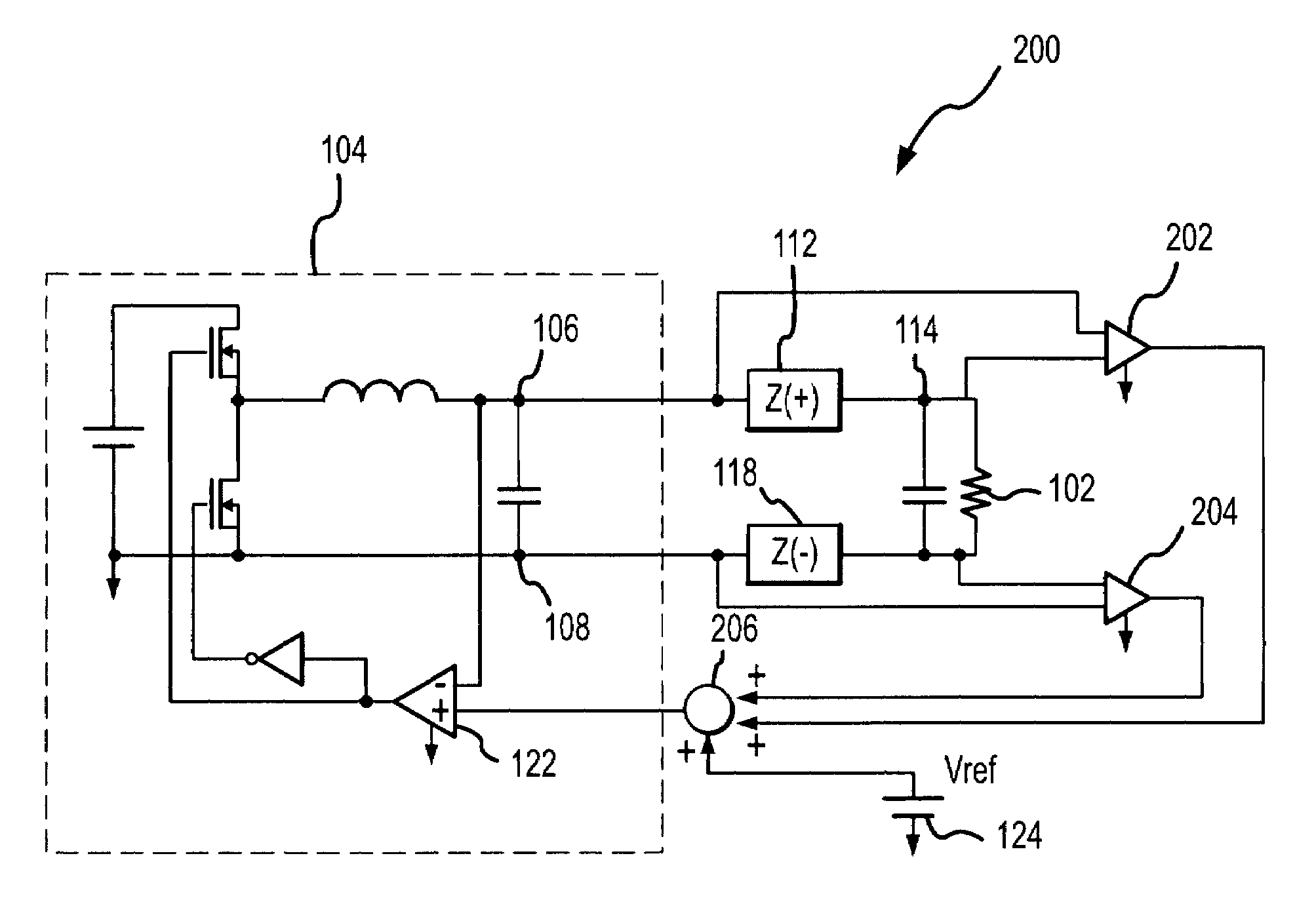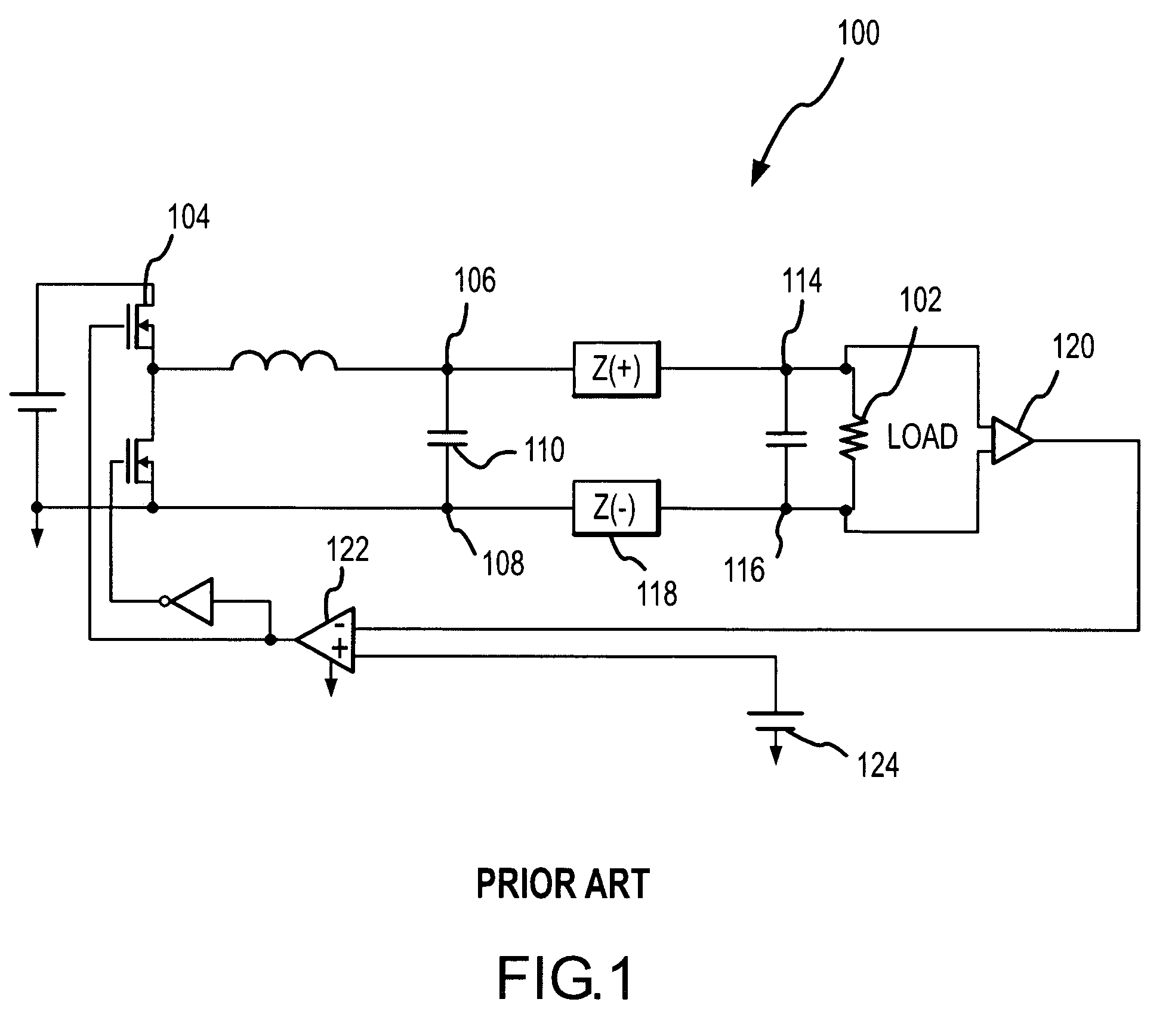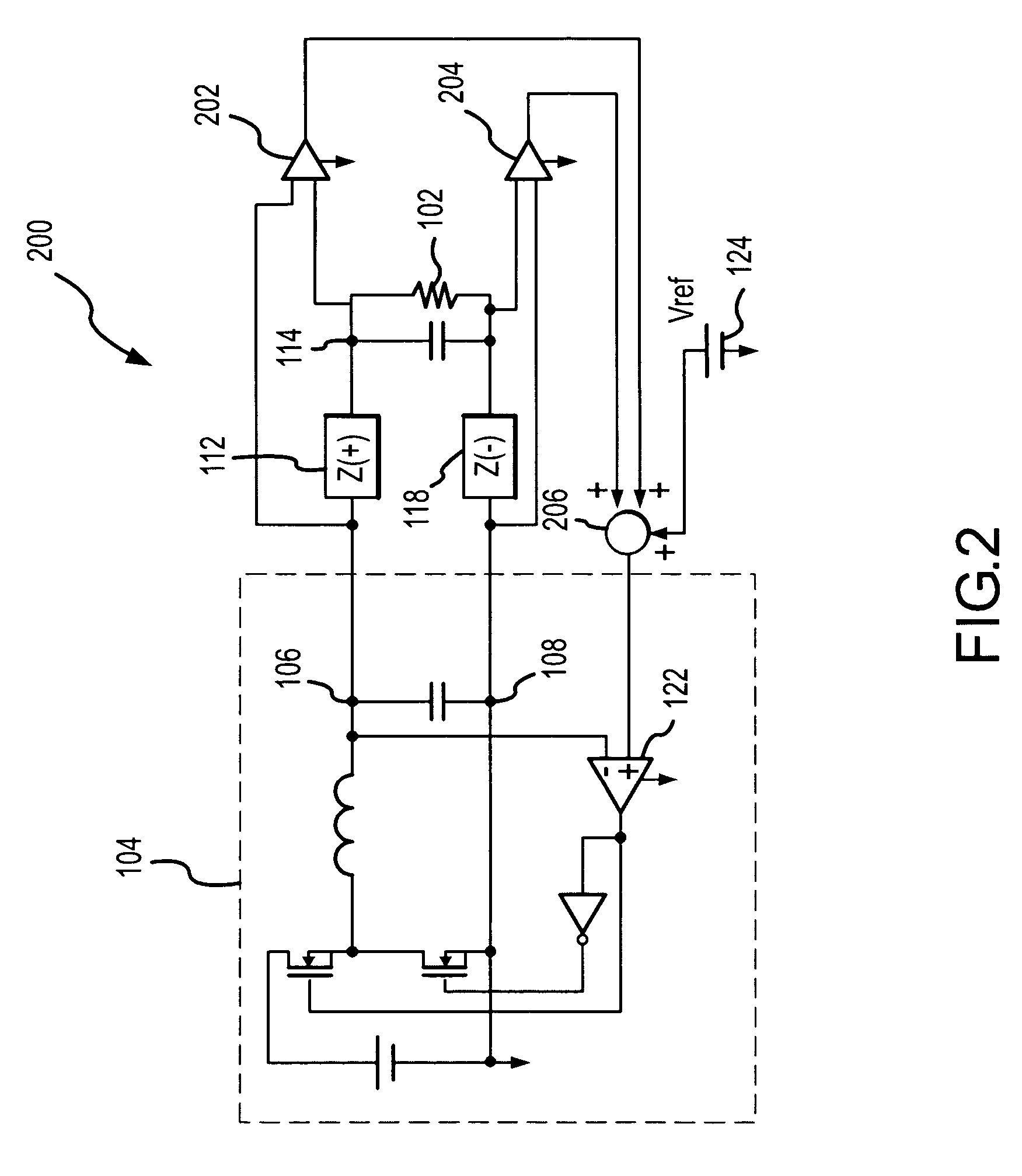Method and apparatus for voltage compensation for parasitic impedance
a parasitic impedance and voltage compensation technology, applied in the field of voltage regulation, can solve the problems of erratic hardware operation, dc-dc conversion, computer hardware is typically voltage intolerant, and the complexity of modern computer hardware is extremely complex and miniaturized
- Summary
- Abstract
- Description
- Claims
- Application Information
AI Technical Summary
Benefits of technology
Problems solved by technology
Method used
Image
Examples
first embodiment
[0034]FIG. 2 depicts a high-level schematic of the invention, namely a voltage regulation circuit 200, affixed to the system or load 102. The present voltage regulation circuit 200 operates to stabilize the input voltage to the load 102 at the desired value.
[0035]The voltage regulation circuit 200 includes a first amplifier 202 and second amplifier 204, each of which produce an input for an offset generator 206. The operation of the amplifiers 202, 204 and generator 206 will be discussed in turn.
[0036]The first amplifier 202 has two inputs. The first input is connected to the first node 106 and the second input to the third node 114. Thus, the voltage difference between the first input and second input of the first amplifier 202 is the voltage drop across the first parasitic impedance 112. Accordingly, the first amplifier 202 outputs a voltage signal equal to this voltage drop.
[0037]Similarly, the second amplifier 204 has a first input connected to the fourth node 116 and a second i...
embodiment 200
[0045]Thus, the voltage at the input of the load 102 is VI+VP2, while the voltage at the load output node 116 is VP2. The load voltage must equal the difference between input and output voltages, which is the desired input voltage VI. In this manner, the present embodiment 200 may supply a load 102 with a voltage equal to a desired input voltage (or at least within a desired voltage tolerance of the input voltage), regardless of any parasitic impedances experienced by the system.
[0046]FIG. 3 depicts a more detailed schematic of the embodiment of FIG. 2. Specifically, FIG. 3 depicts the circuitry employed to construct the first amplifier 202, second amplifier 204, and offset generator 206. The first amplifier 202, for example, consists of a first resistor 210 electrically connected to the first node 106 and a first amplifier node 227, a second resistor 212 electrically tied to the first amplifier node 227 and a second amplifier node 230, a third amplifier resistor 214 in electrical c...
PUM
 Login to View More
Login to View More Abstract
Description
Claims
Application Information
 Login to View More
Login to View More - R&D
- Intellectual Property
- Life Sciences
- Materials
- Tech Scout
- Unparalleled Data Quality
- Higher Quality Content
- 60% Fewer Hallucinations
Browse by: Latest US Patents, China's latest patents, Technical Efficacy Thesaurus, Application Domain, Technology Topic, Popular Technical Reports.
© 2025 PatSnap. All rights reserved.Legal|Privacy policy|Modern Slavery Act Transparency Statement|Sitemap|About US| Contact US: help@patsnap.com



